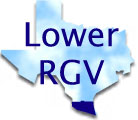| 1.0 | TRAVEL AND TRAFFIC MANAGEMENT |
| 1.3 | ROUTE GUIDANCE |
| 1.3.0 | ITS shall include a Route Guidance (RG) function. Route Guidance will provide travelers with directions to selected destinations. Four functions are provided, which are, (1) Provide Directions, (2) Static Mode, (3) Real-Time Mode, and (4) User Interface. |
| 1.3.3 | RG shall include a Real-Time Mode for issuing information to travelers. |
| 1.3.3.2 | The Real-Time Mode shall include the capability to operate in either or both of the following two configurations: |
| 1.3.3.2.1 | Real-Time Mode Mobile Based systems shall include the capability to receive infrastructure information and use it in determining routing. |
| 1.8.2 | TDM shall include a processing function. |
| 1.8.2.10 | The processing function's dynamically generated management and control strategies shall include the parking management and controls to include, but not be limited to, the following: |
| 1.8.2.10(a) | Price structure. |
| 2.3.0 | ITS shall include a Personalized Public Transit (PPT) function. |
| 2.3.3 | The PPT shall include a Data Collection function. |
| 2.3.3.1 | Data Collection shall include on-board sensors to monitor, but not be limited to, the following: |
| 2.3.3.1(c) | Fare collection. |
| 2.3.3.3 | Data Collection shall support the off-line billing for fares paid by agencies. |
| 3.0 | ELECTRONIC PAYMENT |
| 3.1 | ELECTRONIC PAYMENT SERVICES |
| 3.1.0 | ITS shall include an Electronic Payment capability. Electronic Payment Services allows travelers to pay for transportation services by electronic means. Four functions are provided, which are, (1) Electronic Toll Collection, (2) Electronic Fare Collection, (3) Electronic Parking Payment, and (4) Electronic Payment Services Integration. |
| 3.1.1 | Electronic Payment shall provide an Electronic Toll Collection (ETC) capability. |
| 3.1.1.4 | ETC shall include the capability to identify those vehicles and/or operators that violate its toll collection process. |
| 3.1.2 | Electronic Payment shall include an Electronic Fare Collection (EFC) capability. |
| 3.1.2.1 | EFC shall be implemented in a manner that the traveler is able to use a compatible fare medium for all applicable surface transportation services. |
| 3.1.2.2 | EFC shall provide the capability to implement variable and flexible fare structures. |
| 3.1.2.3 | EFC shall be capable of identifying voided and/or invalid payment media. |
| 3.1.2.4 | EFC shall provide the capability for third party payment of transportation services. |
| 3.1.2.5 | For those systems requiring special eligibility, EFC shall provide the capability to verify the eligibility of riders. |
| 3.1.2.6 | EFC shall be implemented in a manner that permits expansion into other uses for the payment medium such as payment of retail, telephone, etc. |
| 3.1.2.8 | EFC shall provide the capability for passengers to pay fares without stopping. |
| 3.1.4 | ITS shall include an Electronic Payment Services Integration (EPSI) feature. |
| | |












 Web Spinner Technology.
Web Spinner Technology.